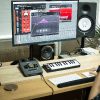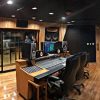
It is a dream for every budding musician to record one or more albums in their lifetime. Decades ago, recording an album was not an easy thing. Musicians have to play and show their caliber in the bars and parties before some producer in the crowds gets impressed and offers them a great opportunity.
Today, the things have changed to a great extent that musicians no more need to rely on the big producers and studios for creating an album. Thanks to the easy availability of music recording equipment, most musicians can record albums in their home, garage, and storerooms.
You can record in your home, post online and become a star overnight, and this all possible in today’s scenario. In this article, we will explain how the music is recorded in simple steps.
Step 1:
The recording process in earlier days was much more straightforward. The entire recording of the song completed in a one or two takes, which takes just a couple of hours in a day.
Today, the recording techniques employ sophisticated technology called multitrack recording. In this technique, each instrument is recorded individually and mixed later. This technique offers two main advantages.
· It allows sound engineers to polish the sound of each instrument.
· It allows each instrumentalist to record their portion separately, without the need of other performers.
Step 2:
Rhythm or beat is essential for any song. Both singers and other instrument players need to follow the rhythm pattern to create perfectly timed and harmonious music piece. This is the reason why drums, bass, and rhythmic instruments are recorded first.
Step 3:
After recording the rhythmic instruments, the next step involves recording the harmonies and chord structure. Here, the instruments are decided based on the type and structure of the song.
Step 4:
In this step, the melody is recorded using one or a combination of different instruments. Generally, the most dominant vocal or instruments (like the guitar) are recorded first.
Step 5:
This is the final stage, where finishing touches are given to add more color to the final product. Some common examples are piano fills, percussion fills, sample sound effects and background vocals.
Editing Process
After recording all the tracks, you have to start editing the same for better output. No matter how good you have recorded, still there pretty chances for the mistakes to happen. These mistakes are fixed using music editing software and other tools. During the editing process, you may delete a specific track or remove a certain section of the instrument, which does not add value to the entire track.
Noise reduction is one of the essential processes in today’s music editing process. As the name says, noise reduction leads to removal or at least reduction of the unwanted sound in the recording. Some of the examples for unwanted sounds include breaths, chair squeaks, amp hissing, background voices, and footsteps.
Mixing
In this phase, all the individually recorded and edited tracks are mixed to sound like a complete performance.
Mastering
This is the final stage, where the mixed audio piece is prepared to sound good across all the compatible devices and in all media formats.





